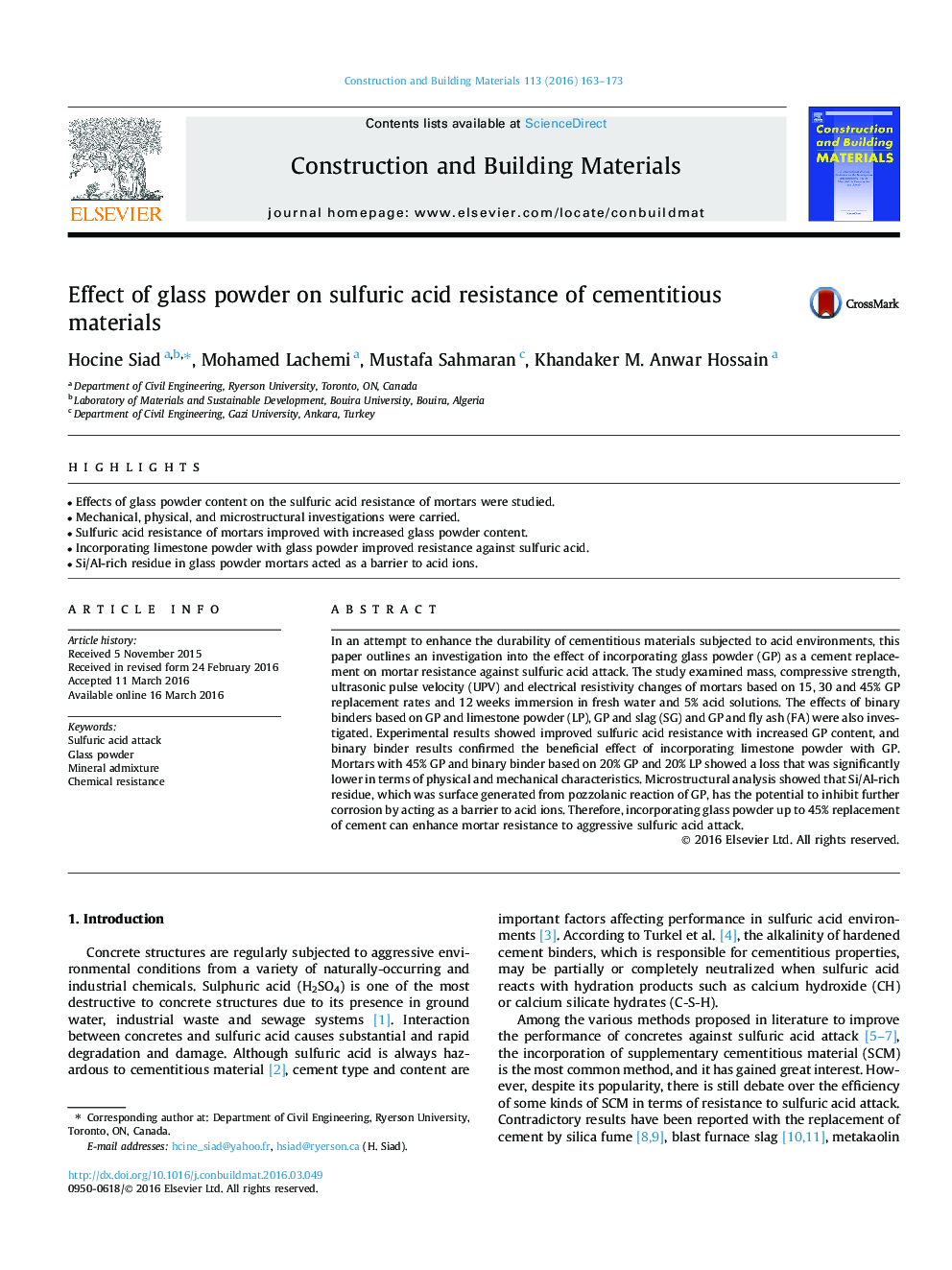| Article ID | Journal | Published Year | Pages | File Type |
|---|---|---|---|---|
| 256145 | Construction and Building Materials | 2016 | 11 Pages |
•Effects of glass powder content on the sulfuric acid resistance of mortars were studied.•Mechanical, physical, and microstructural investigations were carried.•Sulfuric acid resistance of mortars improved with increased glass powder content.•Incorporating limestone powder with glass powder improved resistance against sulfuric acid.•Si/Al-rich residue in glass powder mortars acted as a barrier to acid ions.
In an attempt to enhance the durability of cementitious materials subjected to acid environments, this paper outlines an investigation into the effect of incorporating glass powder (GP) as a cement replacement on mortar resistance against sulfuric acid attack. The study examined mass, compressive strength, ultrasonic pulse velocity (UPV) and electrical resistivity changes of mortars based on 15, 30 and 45% GP replacement rates and 12 weeks immersion in fresh water and 5% acid solutions. The effects of binary binders based on GP and limestone powder (LP), GP and slag (SG) and GP and fly ash (FA) were also investigated. Experimental results showed improved sulfuric acid resistance with increased GP content, and binary binder results confirmed the beneficial effect of incorporating limestone powder with GP. Mortars with 45% GP and binary binder based on 20% GP and 20% LP showed a loss that was significantly lower in terms of physical and mechanical characteristics. Microstructural analysis showed that Si/Al-rich residue, which was surface generated from pozzolanic reaction of GP, has the potential to inhibit further corrosion by acting as a barrier to acid ions. Therefore, incorporating glass powder up to 45% replacement of cement can enhance mortar resistance to aggressive sulfuric acid attack.
